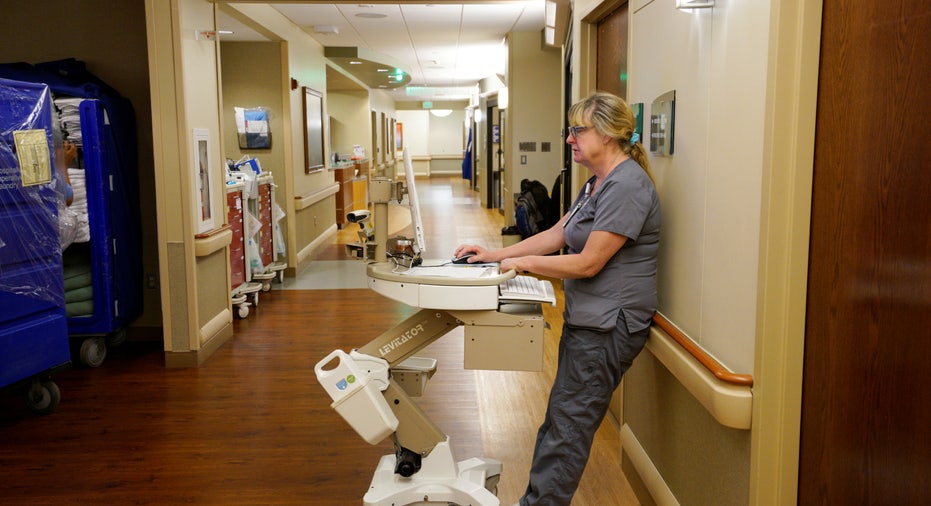Sharp Job-Growth Slowdown Creates Fed Conundrum

The labor market, which for weeks was heralded as one of the bright spots in the U.S. economy, saw a sharp slowdown in job creation in May, delivering a significant downside surprise to both Wall Street and the Federal Reserve.
The Labor Department reported the U.S. economy added just 38,000 net new jobs last month, a far cry from the 164,000 jobs economists anticipated. It was the lowest level of job creation in five years. On top of that, figures from the prior two months were revised lower. March’s reported increase of 208,000 was knocked back to 186,000, while April’s 160,000 jobs were cut to 123,000.
Elsewhere, data showed the jobless rate fell to a nine-year low as more Americans left the workforce. The unemployment rate declined more than expected to 4.7% from 5% in April, while the labor force participation rate declined to 62.6% from 62.8%.
Overall, J.J. Kinahan, chief strategist and managing director at TD Ameritrade, said this report was nothing short of a big disappointment. He pointed to the continued bleeding of jobs from the manufacturing and mining sectors as one area of concern.
The mining sector lost 10,000 jobs during the month, while the information sector shed 34,000 jobs due to a temporary strike by Verizon (NYSE:VZ) union workers.
“The U.S. is not a manufacturing-based economy, but you look to that area for strength when the economy is growing. To see that it’s slowed puts you in a bad trend,” he said.
Strong job growth in May came from the health care services sector, which saw a gain of 46,000 jobs in ambulatory health care services, hospitals, and nursing-care facilities. Kinahan said that is one positive sign from the report as health care continues to be one of the top sectors for job creation month after month.
He also pointed to a pickup in wages as one of the lone bright spots in an otherwise discouraging report. Average hourly earnings increased 0.2% for the month, as had been expected.
Spotlight on the Federal Reserve
As the economy has recovered from a rough start to 2016, expectations for the Federal Reserve to raise interest rates for the first time since December have steadily increased as the market had begun to price in a summer rate hike. Helping that momentum was talk from policymakers including Fed Chief Janet Yellen who, in recent weeks, pointed to the labor market as a sign of strength for the U.S. economy.
However, combined with weak job creation in May and downward revisions to the prior months, market expectations for a rate hike in the next two months have plunged. Fed funds futures, a tool used to gauge Wall Street’s expectations for changes in monetary policy, showed a 21% chance of a June rate hike, while odds for at least one increase by July stood at 58%. Immediately following the job report’s release, June odds dropped to just 4%, while July declined to 34%, and September stood at 50%.
Tim Courtney, Exencial Wealth Advisors chief investment officer, said the Fed’s decision just got more complicated.
“Now they’re put into a bad position because on one hand, we do have weak jobs growth coupled with weak GDP. But at the same time, wages are increasing, service inflation is increasing, and money supply over the last several months has been moving higher,” he said.
Indeed, other areas of the economy have shown signs of strength as data on the housing market and the health and confidence of the U.S. consumer have been robust. The key for the Fed, Kinahan said, is that the firmness doesn’t fade.
“The consumer is ready to spend again and housing has been pretty good. Auto sales were weak [in May] but that being said, it’s been one of the brightest spots in the economy over the last 18 months and that pace is a difficult one to continue,” he said.
If that strength continues in those areas of the economy, and the June jobs report shows a bigger pickup in growth, a September rate hike would be in order, he said.
Courtney said that while the U.S. is not yet in recession territory, the economy hasn’t been able to gain enough traction to keep the growth going, and that will be the biggest challenge for the central bank to reconcile.
“There are other signs out there that would say it’s not this bad, that households are doing quite well. But overall, it’s still a sign we’re not growing fast enough, and that’s been the economy’s trouble for several quarters now,” he said.
To that point, following the jobs report, Barclays analysts said the hiring trend points to increased risk of recession, and warned a move on rates by the Fed could be on hold until December.
“That payroll growth has fallen below the current expansion average in three of the past four months signals to use that risks of a near to medium-term recession have risen,” they wrote in a note. “FOMC members will likely want to see at least two months of evidence that hiring has rebounded before moving to another rate hike.”



















